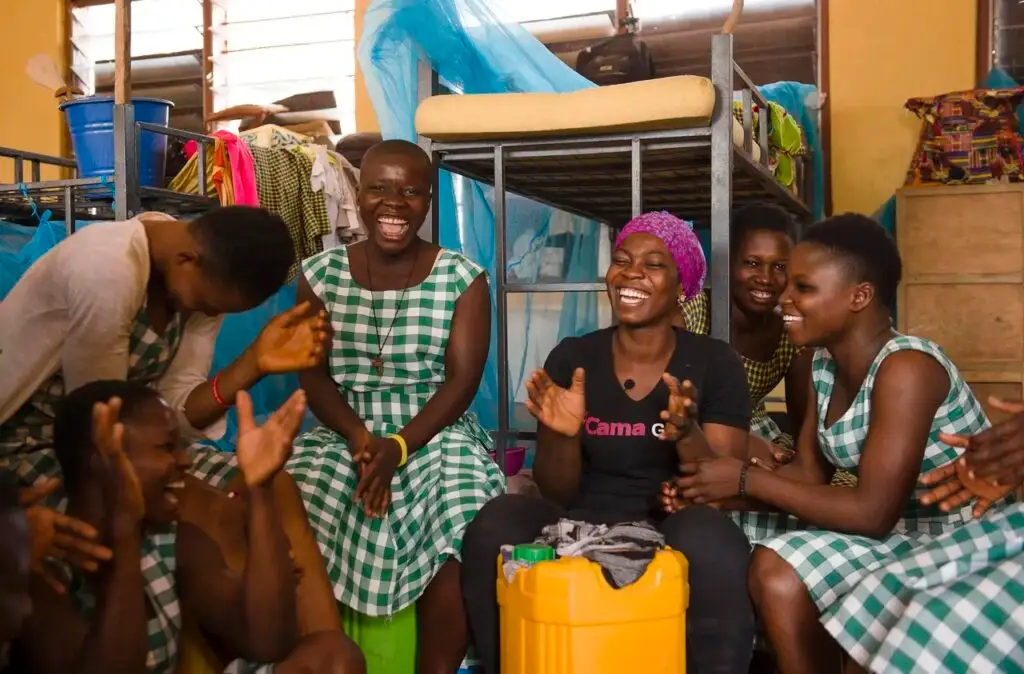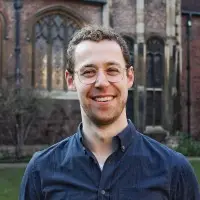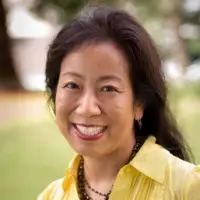In the U.S. and around the world, young people in the wake of the pandemic are struggling with depression, anxiety, stress and other mental health challenges, and schools are often unable to find enough counselors and support staff. But recent graduates and other young adult mentors trained to coach students may be able to provide a supplemental source of support—benefitting both students and the mentors themselves.
Campaign for Female Education (CAMFED), a nonprofit organization in sub-Saharan Africa, trains young women to become “Learner Guides,” mentors who can foster life skills and support school engagement for marginalized youth, especially girls. These recent high school graduates return to their local schools for 18 months to deliver a life skills curriculum, mentor and advocate for vulnerable students, and engage with the community.
The program leverages the unique power of young adults who have recent firsthand knowledge of the education system and who are admired and respected by students—they often become relatable confidantes. CAMFED’s Learner Guides are not trained classroom teachers, but they do have expertise at being teenagers, and they can support youth in the social and emotional dimensions of their schooling journey. By doing so, they free up time for credentialed classroom educators to focus on teaching.
Dotto’s mother was a seasonal farmer in Tanzania who struggled to make ends meet. In their village, other girls Dotto’s age were already married, and she felt pressure to do the same. After all, it would save her mom from worrying about buying her school books and uniforms. But she wanted to continue studying, and with the support of CAMFED, she finished secondary school. Dotto was excited to become a CAMFED Learner Guide and return to her school to help children with life skills. One of her students, Khadija, says, “The program has also given me confidence to ask for help when I need it. And now if I discover that another girl does not value herself, I can talk to her and help raise her self-esteem.”
The experience also developed Dotto’s ability to lead teams and speak publicly with a sense of pride and authority. Students started referring to her as “Madam,” and she felt valued in the community. She has also started a soap-making business and lends money to other women who want to start their own businesses. “I see Madam Dotto as my guardian because she helps me with so many things,” Khadija said. “She is someone I trust and can talk to about my personal problems outside of the classroom.”
Learn more about Dotto’s story in the video below.
Independent evaluations of Learner Guides in Tanzania reported a 33% reduction in dropout rates for marginalized girls. Students in schools with Learner Guides also scored nearly twice as high on reading and math assessments. Girls participating in the program report significantly higher levels of self-esteem, more positive attitudes toward school, and greater confidence in shaping their own life goals. About 75% of the guides also take on local community leadership roles, such as serving on district school committees. CAMFED has received international recognition for its impact, including the 2017 WISE Award and the 2020 Yidan Prize.
The Learner Guides model began in Tanzania and Zimbabwe in 2013, and has since spread to reach over two million students. To date, CAMFED has trained over 23,000 guides in five African countries. CAMFED’s team has identified three elements that are key to the program’s success:
- Credibility: Guides are respected because they are high school graduates who come from the communities they serve. They know how to navigate community relationships, norms, and challenges, which helps them advise younger students on such dynamics in and out of school and identify relevant local supports.
- Proven curriculum: Guides follow a structured, life-skills curriculum that is both research-backed and proven in the field. It is integrated into the school schedule, with at least one interactive lesson weekly. Guides undergo an initial residential training and receive workbooks and lesson plans.
- Meaningful resources: CAMFED Guides are volunteers, but they receive stipends, access to interest-free loans to start businesses through the microlending platform Kiva, and access to an internationally recognized vocational qualification that puts them on a fast track to teacher certification. Because the guides were themselves underserved learners, supporting their own post-school transitions also benefits them.
Other global efforts also leverage young people to mentor and tutor current students. The Teacher Community Assistant Initiative in Ghana trains high school graduates to lead small-group remedial classes for primary school learners. These community assistants have helped the schools’ students make significant gains in both math and literacy. Sistema de Aprendizaje Tutorial (Tutorial Learning System), an alternative secondary education program in rural areas across Latin America, trains young people from the community as tutors. The program has reached an estimated 300,000 students in Colombia, Honduras, Nicaragua, Brazil, and Ecuador and improved learning outcomes as well as increased students’ feelings of civic responsibility and female empowerment. In India, the nongovernmental organization Pratham trains a network of community youth to support elementary school students who work on self-guided, tablet-supported projects after school; Pratham’s co-founder, Madhav Chavan, calls this network “social infrastructure.” And as part of the MyMachine program in Belgium, primary school children conceive their “dream machine” and then collaborate with university students and high school students to design and build it.

In the U.S., the most robust model for near-peer mentoring is City Year, the national service program started in 1988 that places young adults in a variety of community settings. Over time, as more communities requested support for students, they developed their current approach, which places a diverse team of young people into schools as student success coaches (SSC). Currently, City Year recruits, trains and supports over 3,000 corps members as coaches in 29 cities in 21 states. A study by the Everyone Graduates Center at Johns Hopkins University found that City Year SSCs produced social, emotional, academic and attendance gains, and confirmed a “statistically significant and educationally substantial” correlation between students’ strengthened social-emotional skills and their academic outcomes.
Stephanie Wu, City Year’s chief transformation officer, says that City Year’s model is “based on universal developmental needs for young people, although we recognize that education is local … it works because near-peers are young enough to remember what it was like to learn that academic content or to have those social interactions with peers and teachers, but old enough to have gone through it, made sense of it and provide coaching. These experiences are very formative.”
Other K-12 organizations also use this strategy. Eye to Eye, a national nonprofit focused on students with learning and attention differences, pairs middle school students with high school students. The middle school students see positive role models who also are neurodiverse and help them develop social and emotional skills; the older students in turn develop leadership skills. Aim High, a California nonprofit that provides summer enrichment for middle school students from under-resourced communities, hires high school students as part of their teaching team. Many were previously Aim High students.
In recent years, more U.S. schools have started programs to recruit and train recent graduates to become classroom teachers. But a narrow focus on developing future credentialed teachers misses an opportunity to offer younger students varying types of support from slightly more mature peers. Fortunately, for schools interested in deploying these “near-peers” as mentors, the National Partnership for Student Success is a technical assistance hub. California legislators created the California Student Success Coach Learning Network to scale the approach, enabling local not-for-profit organizations with existing AmeriCorps programs to receive technical assistance and incorporate the student success coaching model into their existing programs.
As Wu put it, “There is a natural affinity that older peers have for younger peers. It’s a powerful, bidirectional connection. It just takes adults in the system to recognize that natural dynamic and have the imagination to create those opportunities for both older and younger peers to connect with each other.”
Want to learn more about the Learner Guides? Check out the Brookings Institution’s reflections on scaling the Learner Guides program.




